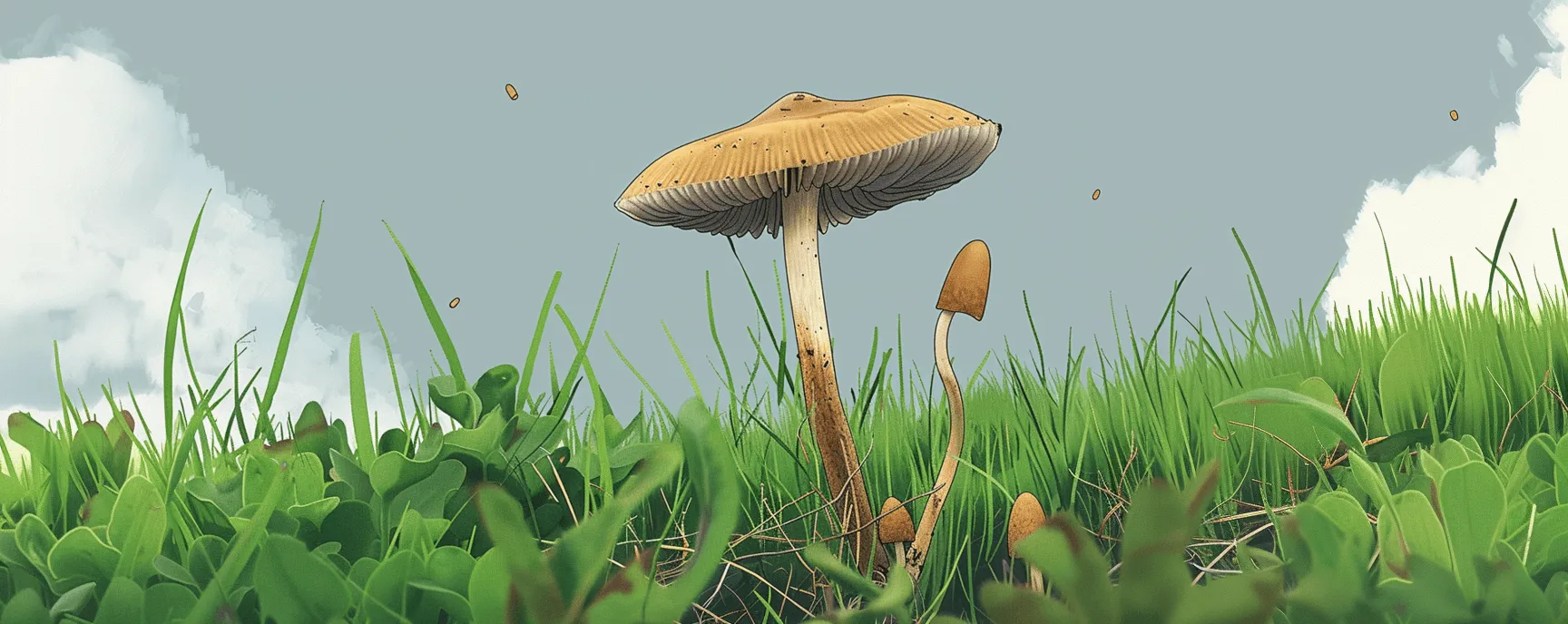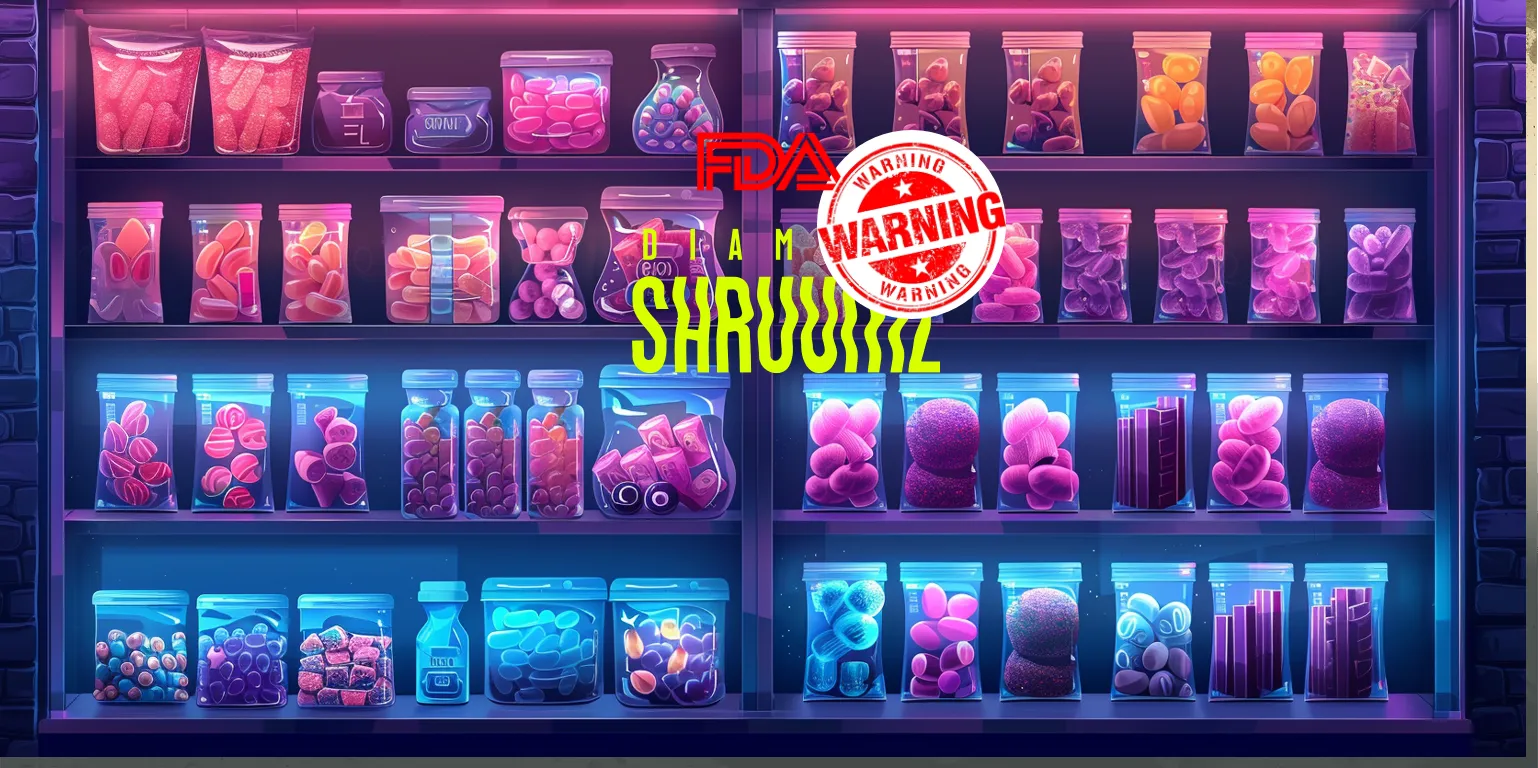“The great irony of having psychedelics and heroin together on the same “Schedule” is that the former has the potential to reduce the harm done by the latter— not to mention its lower-scheduled cousins — in a way that criminalization never will.”
Around nine pm on September 15, 2022, Jonathan Ulloa, 23, of Palisades Park, New Jersey, texted his friend Mike* and received no reply.
At the time, Ulloa thought nothing of it; like many of the people he used drugs with, Mike would sometimes disappear for a few days, but he’d always hear back from him eventually. “It wasn’t until his parents called me asking if I knew where he was [and], I had no idea,” he says, that he began to worry.
Friends since childhood, Jonathan and Mike would often meet up after work to buy and use bags of illicit fentanyl, which was both cheaper and stronger than the legally manufactured prescription opiates they’d started with in high school. But on this night, for whatever reason, Mike decided to meet up with other friends instead, using the drug near a train station in Newark. When Mike’s friends recognized that he was showing signs of an overdose, they sat him on a park bench, called 911, and fled the scene for fear of being charged with a crime.
EMTs managed to reverse Mike’s overdose by administering Narcan, then brought him to the hospital for further stabilization. Unfortunately, he was still not out of the woods. “People come out of being Narcanned, and they are extremely upset, almost violently trying to get the drug back,” explains Ulloa. “That’s from the Narcan being so strong that it forces your body to go into shock.” As Ulloa would later learn, hospital staff neglected to check his friend’s pockets. And so, when Mike awoke in the throes of fentanyl withdrawal, “He ran into the bathroom and used right there with the door locked.” This time, doctors couldn’t get to him in time to save him. Once a janitor had gotten the door open, they worked for about 45 minutes to revive Mike before pronouncing him dead at age 23.
Keep Up with Uncensored Psychedelic Trends
Join our newsletter at Psychedelics Uncensored.
We respect and protect your privacy. By subscribing your info will be subject to our privacy policy . Unsubscribe easily at any time
(Note: the above is a layperson’s understanding and account of how Narcan works, not a medical professional’s. He is referencing the fact that Narcan can cause immediate and severe withdrawal symptoms including vomiting, body aches, increased blood pressure, and irritability, according to Narcan’s FAQ.)
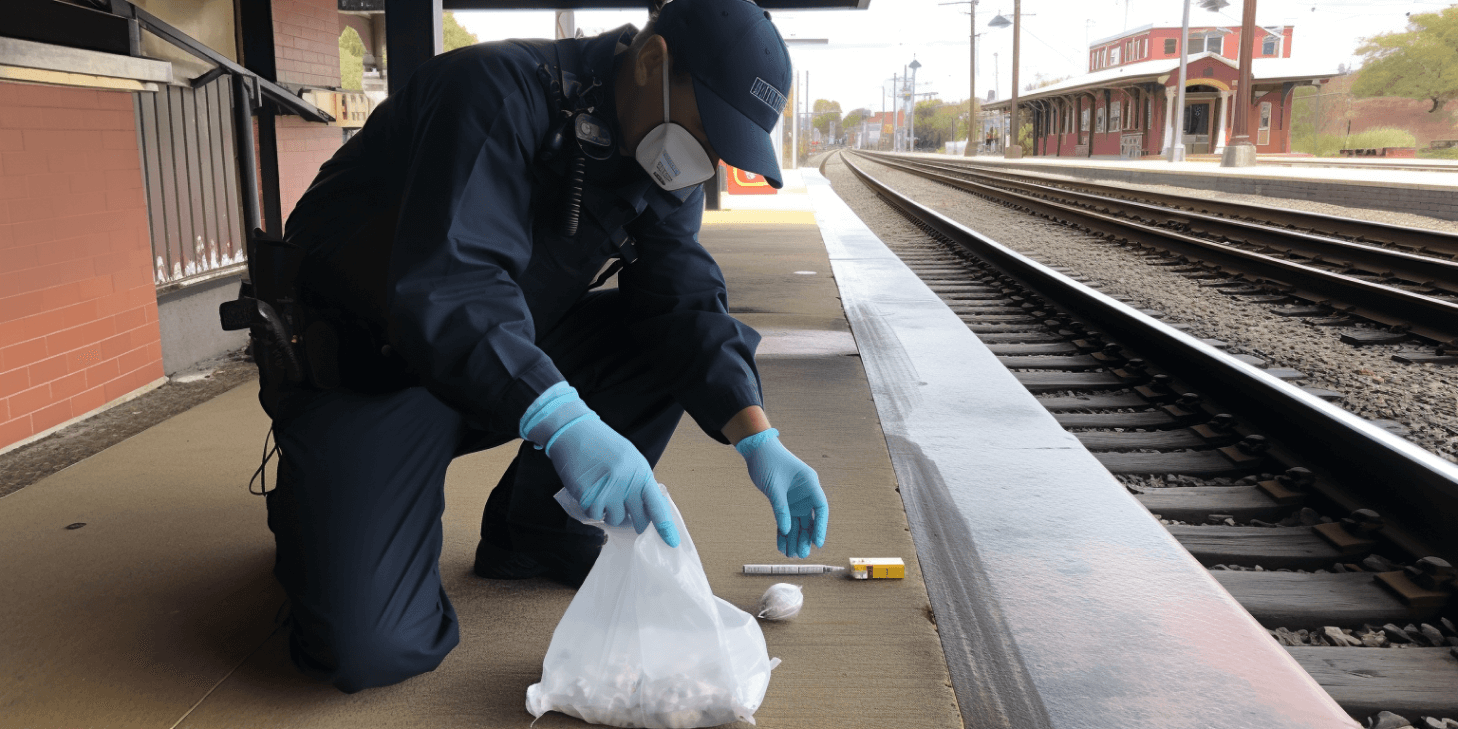
Mike’s is just one of the many lives claimed by fentanyl, a relatively new drug that has already caused an untold amount of social misery in the United States. In addition to those who take it on purpose, the drug kills those who take it by accident, as illegal drug operations overseas have begun using illicitly produced fentanyl to pad out their supply. (It’s worth noting these imitations are so chemically similar to the version patented by Big Pharma that most toxicology labs cannot tell the difference.) A third category of fentanyl deaths is accidents involving the legally manufactured and prescribed version. In one such instance, an elderly woman was found dead in a sauna because she was unaware that an external heat source would increase the rate at which her fentanyl patch released the drug into her bloodstream. In another, a 15-month-old boy died after being exposed to his mother’s fentanyl patch while cuddling with her in bed. (He is believed to have ingested the patch, although it was never found.) Yet, fentanyl and its analogs remain legal and more loosely regulated than most public health experts think is wise. This is not to imply that criminalizing these drugs would fix the problem, but to highlight the lack of correlation between a drug’s dangerousness and its legal status.(1, 2, 3, 4)
Meanwhile, despite being relatively harmless — or more saliently, according to research, potentially beneficial — psychedelics like psilocybin-containing mushrooms remain criminalized in all but a small handful of states and cities. How did we get here? The answer is complicated, but much of it comes down to money, politics, and the various intersections thereof.(5)
The Social Cost of Opiates
The causes of opioid use disorder (more commonly known as opioid abuse or addiction) are complex, but interviews and research have led me to conclude that its primary ingredients are a psychologically traumatized population and an available supply of drugs. The United States has experienced numerous waves of problematic opioid use going back to the Civil War, when the widespread use of morphine to treat soldiers’ pain collided with the availability of hypodermic needles to create a substantial number of morphine users. Heroin use surged around the turn of the century when German pharmaceutical company Bayer began marketing the drug as a safer, less addictive alternative to morphine, useful for treating pain, coughs, and women’s menstrual troubles. Due to many factors (the federal outlawing of heroin in 1924 made it massively more expensive, the Great Depression left most Americans unable to purchase much of anything, and World War II further restricted the supply, to name a few), overdose deaths fell steadily from their turn-of-the-century peak to practically nothing in the late 1950s. Deaths rose slightly in the 1960s. It is notable that some veterans returning from Vietnam brought home habits acquired overseas as they struggled with physical and emotional pain. The hippie counterculture nonetheless took much of the blame for rising drug use. By 1970, a campaign of divestment from the inner cities was driving an epidemic of heroin abuse that killed about 3,000 people that year, many of them young black and brown men. Sadly, the death toll related to opioids and opiates has since increased exponentially as the result of the unprecedented crisis through which we are now living.(5, 6, 7, 8, 9, 10)
The modern opioid epidemic has come in three waves. In 1995, Purdue Pharma patented the prescription painkiller OxyContin, which the FDA approved without any long-term studies or assessment of its addictive potential. The company sent representatives to push the drug to doctors, knowingly lying about its safety. While it did have legitimate applications, doctors were encouraged and, at times, even bribed by drug reps to prescribe it in cases where it may not have been necessary. The resulting wave of prescriptions left many patients dependent on painkillers.(11)
According to a National Institute on Drug Abuse report, “Of those who began abusing opioids in the 2000s, 75% reported that their first opioid was a prescription drug,” a complete reversal from the 1960s when many users started with heroin. (This tracks with Ulloa and his friends’ experiences growing up in the early 2000s.)(12)
Keep Up with Psychedelic Trends
Get uncensored psychedelic news, events, and updates. Join Psychedelics Uncensored!
We respect and protect your privacy. By subscribing your info will be subject to our privacy policy . Unsubscribe easily at any time
The second wave of the epidemic began in 2010, when many who’d gotten hooked on prescription pills began switching to heroin, which is cheaper. Overdose deaths from heroin began to rise, peaking at around 15,000 heroin-involved deaths in 2016. It’s important to note that around ⅓ of these heroin-involved deaths also involved synthetic opioids other than methadone. That’s because an overlapping third wave of the crisis began in 2013 when the powerful synthetic opioid fentanyl, and its analogs, began to be over-prescribed in much the same way OxyContin had been. Fentanyl – which is up to 50 times stronger than heroin – was initially approved only to treat severe breakthrough pain in those with pre-existing opioid tolerance, like terminal cancer patients. But soon after, a regulatory body controlled by the very companies that make fentanyl and other opioids got the wording to doctors’ contracts changed, so they simply had to be aware these drugs were meant for people with pre-existing tolerance. A 2018 New York Times report details how this led to a spike in overdose deaths, even among some patients taking it as directed — all while the FDA turned a blind eye.(13, 14, 15)
As they proliferated in the legal marketplace, synthetic opiates also began showing up in illegal drugs like heroin, cocaine, methamphetamines, and MDMA — often without users’ knowledge. Drug suppliers overseas began using illicitly manufactured fentanyl to cheaply increase their drugs’ potency without adding substantial amounts of weight to what they were moving. This has caused the greatest spike in overdose deaths to date. The National Safety Council notes the fentanyl category of opioids (synthetic opioids other than methadone), “accounted for 53,480 preventable deaths in 2020, representing a 59% increase over the 33,725 total in 2019.” This adulteration has been responsible for the sharp uptick in deaths from not only heroin but virtually every drug that comes in the form of powder or pressed pills. To make a stark comparison, according to the same report, magic mushrooms killed zero Americans during the same time period (2019-2020). Another study showed that psilocybin-containing mushrooms could only be indirectly attributed to four deaths in the last 41 years, and have only ever been associated with a handful of deaths worldwide. It should be noted that the study’s authors point out that in all of these cases the individuals had other substances in their systems, such as alcohol, cocaine, and amphetamines.(16, 17, 18, 19, 20)
Each year, opioid overdose, misuse, and dependence account for:
Unless you think a life’s value can be measured in dollars, the cost to society is impossible to truly quantify. (No amount of money could erase the truly devastating loss experienced by Mike’s parents and two surviving siblings.) But many have tried. According to a 2021 report from the Pew Research Center, the opioid epidemic is currently incurring some $35 billion a year in healthcare costs, $14.8 billion in criminal justice costs, and $92 billion in lost productivity, or $141.8 billion in total. For comparison’s sake, that total is $30 billion more than the federal government spent on food assistance programs in 2021, and more than seven times the estimated cost to end homelessness according to the Department of Housing and Urban Development. The impact on children and families has also been grave.
According to a 2019 report from the United Hospital Fund, the incidence of neonatal abstinence syndrome (babies born physically addicted to opiates) more than doubled from 2004 to 2013, and there has been a 10% increase in foster care placements since 2012. A fact sheet from the American Academy of Pediatrics notes that 270,000 children were placed in foster care in 2016, and parental substance use was a factor in more than ⅓ of these placements. Another subject interviewed for this story, Anthony Smith, counts his two young nieces (ages three and nine) lucky to have been taken in by their grandparents after their mother (his little sister) fell victim to an accidental overdose caused by fentanyl-laced heroin at age 24. His family knows all too well that children in similar situations often end up in the foster care system: “That’s how three of my siblings were adopted… their mom had a drug problem that was ongoing.”(21, 22, 23, 24, 25)
Pharmaceutical companies are not the only factor in this crisis, but they are the only one that has made billions of dollars in legal revenue off of it. The power conferred by these massive profits goes a long way toward unraveling the mystery of why the U.S. government has allowed them to operate in this way for so long. From 1995 to the early 2000s, the FDA — whose drug division receives 45% of its funding from “user fees” paid by pharmaceutical companies submitting their drugs for approval — put Purdue Pharma itself in charge of doing safety studies on its own drug, OxyContin. In 2011, the FDA repeated this process with the manufacturers of synthetic opioids, who, as noted, managed to loosen regulations enough to permit their products to be prescribed to people without pre-existing opioid tolerance for ailments like back pain and migraines. This lack of oversight correlates with a well-documented revolving door between the public and private sectors. For instance, one of the FDA officials who led the approval effort for OxyContin got a $400k/year job at Purdue Pharma just one year later. Another factor is the $880 million in lobbying and political contributions laid out by opioid manufacturers from 2006-2015, according to The Center for Public Integrity. As they note, this was eight times as much as the gun lobby spent over the same period. Legislative efforts to curb the spread of prescription opiates have been defeated over and over at both state and federal levels, often using quasi-front groups like the Pain Care Forum.(26, 27, 28, 29, 30, 31, 32, 33, 34)
In addition to lobbying on behalf of its drugs, the pharmaceutical industry has lobbied against safer alternatives like cannabis. One need only look at the cratering numbers of painkiller prescriptions in states with medical marijuana to understand why. One study published in 2016 found that, in medical marijuana states, painkiller prescriptions fell by an average of 1,826 doses per doctor. In a system where money equals power, even the state struggles to defend the public from drugs that are extremely dangerous outside of medically appropriate situations, or to elevate alternatives to these drugs that are known to be safe and effective.(35, 36)
It’s also worth noting that while late-breaking efforts to crack down on the over-prescription of opiate/opioid painkillers may prevent some people from being introduced to them, they create new dangers for pre-existing users like Jonathan Ulloa and Mike, pushing them to more dangerous alternatives. Ulloa notes that he and his friends only switched to illegal fentanyl when legally manufactured prescription painkillers became less accessible: “I would get 2-3 pills of the real Oxycontin and make sure they were real and safe… over time I was able to get less and less of the real stuff, and there was more of the fake stuff.” Only a humane and holistic approach centered around harm reduction and the manifold social stressors that drive people to abuse drugs stands a chance of making a real dent in the problem.
The Social Cost of Psychedelics Like Psilocybin: No Comparison
“There are so many people who don’t make it out of there. They will join a gang and get more charges, get killed in prison, or come home and their head is still in prison… When I get stressed out, I think about being in my cell, and that feeling becomes comfortable. I shouldn’t be comforted by being caged, but that’s become a part of me.”
These are the words of a 30-year-old New York man named Dan* who lost three and a half years of his young life to prison, the majority of which came after being caught with LSD and marijuana while on probation for a prior drug charge. Like most people who have a job or run a small business, he was doing it primarily for the money, although he also had a passion for his products. While he once used psychedelics to party, Dan says he now views them as a tool for personal growth, a growth which correlates with his ongoing efforts to remain sober from alcohol and opiates: “I went from a place of ‘let’s get drunk and eat mushrooms at a show,’ to ‘I’m taking this and seriously sitting here thinking about things in a ceremonial setting.’”
Dan was just one in a long line of people to be caged for providing psychedelics to those who wanted them. The practice stretches back to at least 1969, when Bob Mulligan of Chicago, IL, just 20 years old at the time, and using LSD regularly in an effort to, in his words, “find God,” was caught up in an undercover police sting. “These people approached and asked me if I could get some [LSD] for them,” Mulligan recalls. “They wanted a lot, which to me seemed ridiculous because how many tabs of acid could you really take? But I had found somebody, and they could get a lot of acid, and I set up a time for everyone to get together and do this deal. In the middle of the deal, when people had the LSD and people had the money, everyone but me pulled out a badge and a gun.” Mulligan was sentenced to three years in prison, but was released after one for good behavior. That the tactics used in this sting operation would not hold up even in today’s generally much more punitive courts is a testament to the government’s frenzy to scare people straight, even before Nixon came out with his “War on Drugs” initiative.(36)
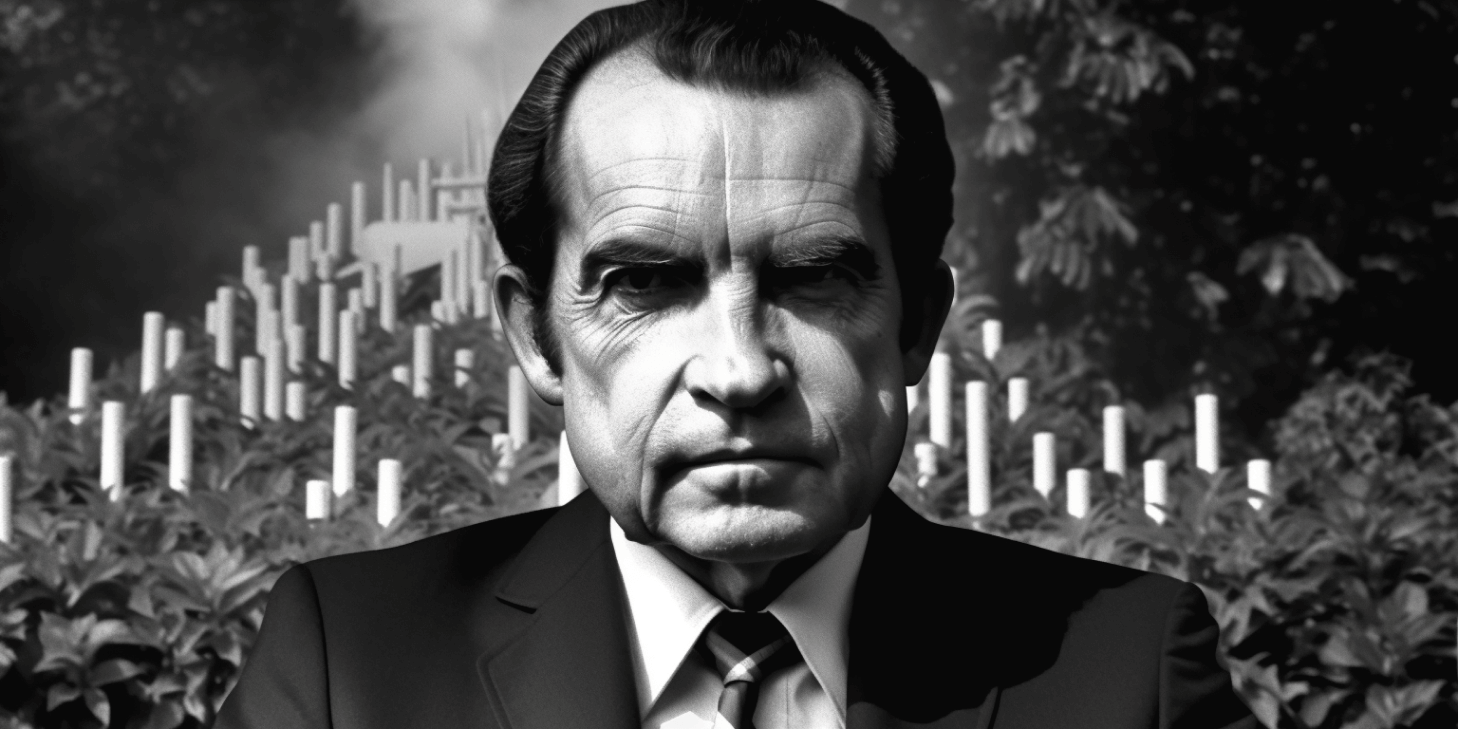
Mulligan’s spiritual path has since led him away from psychoactive drugs, but he still believes they should not be criminalized. He also supports the work of his daughter, Juliana, a therapist who helps people hoping to recover from substance use disorder via treatment with a powerful psychedelic called ibogaine. She found this calling after ibogaine helped her kick opiates herself after years of struggling to do so. “I am so proud of Juliana and the work that she’s doing,” says Mulligan. “I’m proud of all my children, but she had a particularly rough road to get to where she is, and she’s an amazing human being. She’s very skilled, and I’m very happy that she’s doing the work that she’s doing.”
Sending people to prison for any kind of drug is inhumane and counterproductive, but it’s especially absurd to do it over a category of substances that pose so little danger to human life. Particularly as compared to other – legal – substances. LSD and psilocybin consistently rank at the bottom of datasets compiled by experts on the harms incurred by various substances on their users and those around them. Though one should take psychedelic use seriously, it is notable that these drugs have an extremely low level of toxicity and are not physically addictive, producing no withdrawal symptoms when people stop using them. The unpredictability of the experiences produced also may act as a safeguard against overuse. Those who’ve had a “difficult” trip are not usually in a hurry to do it again, although many find the experience of a challenging psychedelic journey valuable.(38, 39)
And yet, the government spent approximately $80,000 locking up Dan for selling LSD and marijuana. In the case of classical psychedelics like LSD, this is a class of drugs that is non-toxic, and with which there have been few direct deaths associated. Additional data and tracking is needed to estimate the cost to U.S. taxpayers of arresting and housing inmates for psychedelics over the course of the War on Drugs. However, if we look at information about cannabis related charges, it throws things into sharp relief. The non-profit research and advocacy group Drug Policy Alliance estimates that 350,000 people were arrested in 2019 solely for marijuana: a drug that is legal (in some form) in 37 states, three U.S. territories, and the District of Columbia. Further, the organization estimates that it costs the U.S. government $47 billion a year to attempt to enforce drug prohibition, noting that nearly half of arrests are for marijuana.(40, 41, 42)
Looking for deaths caused by classical psychedelics such as LSD and psilocybin is challenging as mentioned, as there is a dearth of real data. In terms of pharmacological toxicity, or deaths where the drug is the direct cause, one review found just one death, in 2012, attributed to psilocybin (specifically) in a woman who had received a heart transplant ten years prior. Additional research turns up only three more such potential cases for magic mushrooms, ever. In terms of deaths classed as “behavioral,” one retrospective analysis found only four LSD-related deaths worldwide since the year 2000.(37, 43, 44)
No such retrospective survey exists for psilocybin, but a web search reveals only a handful of incidents. For instance: the Netherlands banned hallucinogenic mushrooms in 2007 after a 17-year-old girl with pre-existing psychological problems plunged to her death from a building after consuming them. Given the U.S. government’s continued investment in drug prohibition, the scarcity of this kind of data is telling.(45, 46, 47)
And yet, both LSD and psilocybin (the latter of which was granted the FDA’s Breakthrough Therapy designation in 2018) remain on the DEA’s Schedule I list of controlled substances, which it defines as “drugs with no currently accepted medical use and a high potential for abuse.” It’s notable that the Breakthrough Therapy designation means that psilocybin research is being fast-tracked as a modality of care for treatment-resistant depression (meaning failure to respond to two or more available treatments), because initial clinical evidence indicates that it may show significant improvement over currently available therapies. So, not only is this drug causing less harm than others in its Schedule, but it could potentially be put to use to treat the very conditions that lead some to self-medicate with things like opioids.(5)
Meanwhile, opioids and opiates (both natural and synthetic—some of which are on less severe lists than Schedule I) accounted for an estimated 80,816 (roughly 75% percent) of the 107,622 drug overdose deaths in 2021, and the CDC estimates that 150 people die each day from synthetic opioids like fentanyl. That’s the equivalent of a catastrophic multiple-car pile-up, or train derailment, every day. Again, this is compared to the fraction of deaths attributed to magic mushrooms (as mentioned, as low as 4 in 41 years, according to one study). It should also be noted that the National Institute of Drug Abuse does not track deaths from psychedelics, making it even more difficult to find relevant data. This in and of itself is interesting, as it implies that the number of deaths due to most classical psychedelics is so low that they cannot really be quantified.(48, 49)
(This information was calculated based on available studies, reports directly attributing deaths to psychedelics and government sources.)
For more on the documented ill effects of LSD, such as the triggering of psychotic episodes lasting more than 48 hours, more research is needed, and caution is advisable, particularly for those with pre-existing conditions. However, according to one research study’s findings, they are rare and better screening methods for test subjects and improvements in “set and setting” can dramatically reduce them.(50)
Arguably, the worst impact of LSD on U.S. citizens was perpetrated by our government via the CIA’s classified MK-Ultra project, which dosed many of its subjects without their knowledge or consent, sometimes for days, weeks, or even months on end – all while they were held captive and subjected to psychological torture. Participants later testified that the primary goal was to develop enhanced interrogation and mind control tactics in response to what they believed, based on little evidence, to be a sophisticated brainwashing program developed by the Soviet Union. We do not know how many MK-Ultra victims died or were left permanently disabled. Still, a handful of victims’ families have attempted to sue the U.S. and Canadian governments over the experiment’s impact on their loved ones. But since these drugs passed into the hands of civilians, their negative impact has been small in comparison to opioids, despite the fact that the American public is often fumbling in the dark when it comes to the self-administration of powerful mind-altering compounds sold on an unregulated black market.(51, 52)
How did such relatively safe compounds end up on the same threat level as heroin? Government attacks on the civilian use of psychedelics date back to the early 1900s when the U.S. government sought to outlaw peyote, which had been (and still is) a part of many indigenous cultures’ spiritual practices. The 1918 incorporation of the Native American Church managed to carve out a First Amendment exemption for religious peyote users, much like Prohibition contained an exception for sacramental wine. But not even the Bill of Rights could stop the drug policies that began in the second half of the 1960s.(53)
In 1965, President Johnson signed the Drug Abuse Control Amendments into law, which, in addition to restricting the sale of barbiturates and stimulants, banned the sale and possession of hallucinogens. In a statement in support of the legislation, the FDA blamed “the non-medical use of certain drugs” for “a rising death toll on the highways, juvenile delinquency, violent and bizarre crimes, suicides, and other abnormal and anti-social behavior.” It even went so far as to claim that the traffic of LSD-25 was overshadowing the traffic of heroin and other narcotics. (The meaning of “overshadow” is subjective, but, as Mulligan notes, one could order LSD from the back of a magazine.) In 1970, the Nixon administration further criminalized psychedelics with the passage of the Controlled Substances Act, which divided drugs into five “Schedules” based on how dangerous they allegedly are. Psychedelics, heroin, and marijuana all went on Schedule I — their mere possession was now a federal crime.(54)
The reasons behind Nixon’s “War On Drugs” initiative were multifaceted. Nixon’s intense personal hatred of drugs, to which he attributed outsized powers, was well-documented and shot through with bigotry and paranoia. In a 1971 quote captured on the Nixon tapes, he said:
“You know, it’s a funny thing, every one of the bastards that are out for legalizing marijuana is Jewish. What the Christ is the matter with the Jews, Bob? What is the matter with them? I suppose it is because most of them are psychiatrists.”(55)
As he also said in his taped White House conversations, Nixon believed the Soviet Union and its sympathizers were trying to weaken America by getting its citizens hooked on drugs.
“Dope? Do you think the Russians allow dope? Hell no… You see, homosexuality, dope, immorality in general: these are the enemies of strong societies. That’s why the Communists and left-wingers are pushing the stuff, they’re trying to destroy us.”(56)
While he often grouped all “drugs” together (except for alcohol, in which he regularly indulged), Nixon had a special hatred for LSD. When LSD guru Timothy Leary escaped from prison in 1970, Nixon devoted large amounts of government resources to a 28-month-long manhunt spanning several continents.(57)
Nixon may have been a notably paranoid square. Still, his feelings seemingly aligned with a section of Greatest Generation voters who felt threatened by the social and political upheavals of the 1960s and whose fears had also impacted policy under Johnson. Whether marijuana and psychedelics led young people to question the war in Vietnam and the morality of societal norms, or simply got them high, was immaterial in the face of this massive cultural backlash. It’s also possible that drugs and “brainwashing” made a convenient scapegoat for parents unwilling to accept that their children were becoming radicals of their own volition.
Former top Nixon aide John Ehrlichman attributed a high level of cynicism — and coherence — to his former boss in a 1994 interview, saying that, rather than being genuinely concerned about the effects of drugs on society, Nixon used them as a pretense to go after hippies and civil rights activists:
“You want to know what this was really all about? The Nixon campaign in 1968, and the Nixon White House after that, had two enemies: the antiwar left and black people. You understand what I’m saying? We knew we couldn’t make it illegal to be either against the war or black, but by getting the public to associate the hippies with marijuana and blacks with heroin and then criminalizing both heavily, we could disrupt those communities. We could arrest their leaders, raid their homes, break up their meetings, and vilify them night after night on the evening news. Did we know we were lying about the drugs? Of course, we did.”(58)
Granted, Ehrlichman had plenty of motivation to paint Nixon in the least flattering light possible, so this explanation should be taken with a grain of salt. But there was probably some truth to his implication that Nixon was crying crocodile tears over lives ruined by drugs, particularly when it came to non-white users. By all indications, the America he wanted to defend from drugs was a white society to which white hippies were welcome to return once they’d straightened up, as many eventually did. (It became a media trope of that generation that the once idealistic hippies became the “me generation”/”greed is good” generation yuppies of the ’80s.) And as the War On Drugs has raged on, black and brown people have suffered disproportionately.(10)
In the end, whether the War on Drugs was cynical or simply misguided at its inception is less important than its impact on human lives, as it has dovetailed with a larger trend toward mass incarceration of a racialized underclass driven by structural forces. These forces are larger than any individual, even the president. For instance: recent President Barack Obama did not share Nixon’s culture war vendettas, took an interest in criminal justice reform, and even admitted to having used marijuana and cocaine himself. And yet, this did not enable his administration to make more than a few small dents in a drug policy that had become substantially more punitive since Nixon, under Democrats and Republicans alike.(59, 60, 61)
Psychedelic Therapy: A Potential Solution
The great irony of having psychedelics and heroin together on the same “Schedule” is that the former has the potential to reduce the harm done by the latter — not to mention its lower-scheduled cousins — in a way that criminalization never will. A number of promising studies have shown that both psilocybin and LSD have a potential role to play in the treatment of depression and anxiety, which are both risk factors in substance use disorder. The most dramatic results with regard to opiates, however, come from a little-known psychedelic called ibogaine.(5)
Derived from the root bark of the iboga tree, ibogaine has been used for medicinal and spiritual purposes for many years by pygmy tribes in Central Africa, as well as the Bwiti tribe of Gabon. It is a psychedelic but not a classic hallucinogen; rather, it is an oneirogen, putting the user in an intense, dreamlike state. Its utility for treating substance dependency was first discovered by Howard Lotsof, an American scientist who self-administered ibogaine in 1962 only to find his cravings for heroin completely gone (he had previously been a dependent user). Since then, a small, strange community has grown up around the so-called “rehab drug,” which they believe can help even the most treatment-resistant cases of opiate dependency.(62, 63, 64, 65)
One member of this community is Juliana Mulligan, the very daughter of Bob Mulligan, who was arrested for LSD so many years ago. Juliana came to ibogaine after years of struggling with an opiate dependency that, at one point, landed her in prison for shoplifting. Juliana’s time in prison ended when she attended a 12-step program as a condition of early release, but she relapsed soon after, as did most of the people she met there. After trying several more times to kick opiates the traditional way, Juliana got clean for good with the help of just one ibogaine treatment. She is now in her final semester of a social work M.A., clocking internship hours as a recovery coach at the Center for Optimal Living, a psychotherapy harm reduction center. Among their offerings are psychedelic integration sessions, and Juliana works with people both before and after they have received ibogaine treatments elsewhere. (Ibogaine is illegal in the U.S. but unregulated in many other countries, including Mexico, Thailand, and Costa Rica.)(66)
While ibogaine can be used for any number of purposes, Juliana says that “it’s particularly good for opioid dependence because it binds to your opioid receptors and then gradually peels off,” allowing patients to “skip a big chunk of withdrawal.” It also, “seems to restart serotonin and dopamine production,” she says. Adding, “You come out feeling excited and invigorated about life.” A far cry from how people often feel when they first get off opiates.(67, 68)
Ibogaine comes with caveats. It is contraindicated (meaning a particular drug is not suitable for a certain situation or condition) for anyone with heart problems, as it can cause serious cardiac side effects, and is more dangerous than psilocybin (which is also being studied to treat addiction). It still requires therapeutic work, both before and after treatment. The legal gray area in which it operates creates space for some practitioners that are disreputable. And, of course, it costs thousands of dollars. However, Juliana says it’s a powerful “last resort treatment” with high success rates for those who’ve tried everything else. And it’s being decriminalized along with magic mushrooms in a handful of states and cities.(5, 69, 70, 71)
Of course, many things would need to happen for ibogaine treatment to become accessible enough to mitigate the opioid crisis. If it were approved by the FDA and regulated, treatment would likely become safer, but, also, potentially more expensive. Private insurance, Medicare, and Medicaid would need to cover it. Pharmaceutical companies that profit off opioid dependency may lobby against it, and other pharmaceutical companies may only lobby in favor of it if they thought they could extract a profit. This is unlikely for a drug typically only taken once (or a handful of times), although some companies might try to engineer it into a methadone-style maintenance drug. It could face opposition from the recovery establishment, as some members consider psychoactive drugs to have no place in sobriety. It would also need to come off Schedule I, which has not even happened for marijuana despite its widespread, state-level decriminalization.
A world that prioritized humane, accessible, and science-backed treatment for substance use disorder would be a world that caused less of it in the first place. “It’s not about the drugs,” notes Juliana, “it’s about, ‘why are people so unhappy about this society that they need to numb themselves out?’ We need to focus on how we get people happier and more supported in their lives.” Unfortunately, these structural factors seem unlikely to change any time soon. Still, one must wonder how many Mikes would still be alive today, and how many Bobs and Dans would have never gone to prison if drug policy was untethered from outdated thinking and Big Pharma lobbying money, and was instead driven by principles of collective care. That could mean everything from harm reduction centers, to safe housing, to the opportunity to connect with others and heal from trauma — in some cases, possibly with the help of those still largely-illegal compounds, psychedelics.
*Some names have been changed to protect identities.
Sources

1. Clinton, H. A., Thangada, S., Gill, J. R., Mirizzi, A., & Logan, S. B. (2021). Improvements in Toxicology Testing to Identify Fentanyl Analogs and Other Novel Synthetic Opioids in Fatal Drug Overdoses, Connecticut, January 2016–June 2019. Public Health Reports, 136(1_suppl), 80S-86S. https://doi.org/10.1177/00333549211042829
2. Kriikku, P., Ojanperä, I., & Lunetta, P. (2020). Death in Sauna Associated With a Transdermal Fentanyl Patch. American Journal of Forensic Medicine & Pathology, 41(4), 313–314. https://doi.org/10.1097/paf.0000000000000565
3. Grissinger, M. (2016). Fentanyl Patch Fatalities: We ALL Have a Role in Prevention! P & T : A Peer-Reviewed Journal for Formulary Management, 41(7), 405–406. https://www.ncbi.nlm.nih.gov/pmc/articles/PMC4927011/
4. Biden-Harris Administration Provides Recommendations to Congress on Reducing Illicit Fentanyl-Related Substances. (2021, September 2). The White House. https://www.whitehouse.gov/ondcp/briefing-room/2021/09/02/biden-harris-administration-provides-recommendations-to-congress-on-reducing-illicit-fentanyl-related-substances/
5. Marks, M., & Cohen, I. G. (2021). Psychedelic therapy: a roadmap for wider acceptance and utilization. Nature Medicine, 27(10), 1669–1671. https://doi.org/10.1038/s41591-021-01530-3
6. Associated Press. (2017, October 29). Opioid epidemic shares chilling similarities with past drug crises. STAT; STAT. https://www.statnews.com/2017/10/29/opioid-epidemic-shares-chilling-similarities-with-past-drug-crises/
7. United States Joint Economic Committee. (2019, September 5). Long-Term Trends in Deaths of Despair – Long-Term Trends in Deaths of Despair. Senate.gov. https://www.jec.senate.gov/public/index.cfm/republicans/2019/9/long-term-trends-in-deaths-of-despair
8. Robins, L. N. (1993). Vietnam veterans’ rapid recovery from heroin addiction: a fluke or normal expectation? Addiction, 88(8), 1041–1054. https://doi.org/10.1111/j.1360-0443.1993.tb02123.x
9. Wysowski, D., Schober, S., Wise, R., Kopstein, A., Caces, F., Steffens, R., & Tate, T. (1993). GENERAL ARTICLES: Mortality Attributed to Misuse of Psychoactive Drugs, 1979-88. Public Health Reports, 108(5), 565-570. Retrieved March 13, 2023, from https://www.ncbi.nlm.nih.gov/pmc/articles/PMC1403432/pdf/pubhealthrep00065-0039.pdf
10. Netherland, J., & Hansen, H. B. (2016). The War on Drugs That Wasn’t: Wasted Whiteness, “Dirty Doctors,” and Race in Media Coverage of Prescription Opioid Misuse. Culture, Medicine, and Psychiatry, 40(4), 664–686. https://doi.org/10.1007/s11013-016-9496-5
11. Department of Justice Office of Public Affairs. (2020, November 24). Opioid Manufacturer Purdue Pharma Pleads Guilty to Fraud and Kickback Conspiracies. Www.justice.gov. https://www.justice.gov/opa/pr/opioid-manufacturer-purdue-pharma-pleads-guilty-fraud-and-kickback-conspiracies
12. National Institute on Drug Abuse. (2015, October 1). Prescription opioid use is a risk factor for heroin use. National Institute on Drug Abuse. https://nida.nih.gov/publications/research-reports/prescription-opioids-heroin/prescription-opioid-use-risk-factor-heroin-use
13. Mmg5998. (2020, February 12). History of the Opioid Epidemic. Sites.psu.edu. Retrieved March 10, 2023, from https://sites.psu.edu/mgcivicissue/2020/02/12/history-of-the-drug-epidemic/
14. Glickman, A. & Weiner, J. (2019, January 20). Why Deaths Continue to Rise in the Opioid Epidemic: Both prevention and treatment strategies needed. Penn LDI. https://ldi.upenn.edu/our-work/research-updates/why-deaths-continue-to-rise-in-the-opioid-epidemic
15. Baumgartner, E. (2018, August 2). F.D.A. Did Not Intervene to Curb Risky Fentanyl Prescriptions. The New York Times. https://www.nytimes.com/2018/08/02/health/fda-fentanyl-opioid-epidemic-overdose-cancer.html
16. Babu, K. (2022, May 10). What is fentanyl and why is it behind the deadly surge in US drug overdoses? UMass Chan Medical School. https://www.umassmed.edu/news/news-archives/2022/05/what-is-fentanyl-and-why-is-it-behind-the-deadly-surge-in-us-drug-overdoses/
17. Drug Overdoses – Data Details. (n.d.). Injury Facts. https://injuryfacts.nsc.org/home-and-community/safety-topics/drugoverdoses/data-details/#:~:text=The%20fentanyl%20category%20of%20opioids
18. Erowid. (2020, April 20). Psilocybin Mushrooms: Fatalities/Deaths. The Vaults of Erowid. https://erowid.org/plants/mushrooms/mushrooms_death.shtml
19. Solon, O. (2017, May 24). Study finds mushrooms are the safest recreational drug. The Guardian. https://www.theguardian.com/society/2017/may/23/study-hallucinogenic-mushrooms-safest-recreational-drug-lsd
20. Gable, R. S. (1993). Toward a Comparative Overview of Dependence Potential and Acute Toxicity of Psychoactive Substances Used Nonmedically. The American Journal of Drug and Alcohol Abuse, 19(3), 263–281. https://doi.org/10.3109/00952999309001618
21. Data Visualization. (2021, August 27). The High Price of the Opioid Crisis, 2021: Increasing access to treatment can reduce costs. Pew.org. https://www.pewtrusts.org/en/research-and-analysis/data-visualizations/2021/the-high-price-of-the-opioid-crisis-2021
22. Adler, S. (2021, March 1). How Much Would It Cost To End Homelessness In America? Learn – GlobalGiving. https://www.globalgiving.org/learn/how-much-would-it-cost-to-end-homelessness-in-america/
23. Brundage, S., & Levine, C. (2019). The Ripple Effect: The Impact of the Opioid Epidemic on Children and Families: Recommendations for an Action Agenda Based on a Multidisciplinary Meeting. United Hospital Funds. https://uhfnyc.org/media/filer_public/17/2c/172ca968-43aa-45f9-a290-50018e85a9d8/uhf-opioids-20190315.pdf
24. State and National Opioid Fact Sheets. (n.d.). American Academy of Pediatrics. https://www.aap.org/en/advocacy/opioid-fact-sheets/
25. Sandler, R. (2019, October 4). The Sacklers Made More Than $12 Billion In Profit From OxyContin Maker Purdue Pharma, New Report Says. Forbes. Retrieved March 8, 2023, from https://www.forbes.com/sites/rachelsandler/2019/10/04/the-sacklers-made-12-to-13-billion-in-profit-from-oxycontin-maker-purdue-pharma-new-report-says/?sh=6f724709477d
26. Smith, A. (2020, September 18). Race – Advocacy to Alleviate Homelessness. Retrieved March 14, 2023, from https://aah-inc.org/wp-content/uploads/2020/09/whomeless.pdf
27. White, C. M. (2021, May 21). Why is the FDA Funded in Part by the Companies It Regulates? UConn Today. https://today.uconn.edu/2021/05/why-is-the-fda-funded-in-part-by-the-companies-it-regulates-2/#
28. Purdue Pharma LP. (2011, October 7). To Determine the Fed Bioequivalence of Reformulated OXY Tablets and Original OxyContin® (OXY) Tablets. Clinicaltrials.gov. https://clinicaltrials.gov/ct2/show/NCT01101178
29. Pappin, J., Bavli, I., & Herder, M. (2022). On what basis did Health Canada approve OxyContin in 1996? A retrospective analysis of regulatory data. Clinical Trials, 19(5), 584–590. https://doi.org/10.1177/17407745221108436
30. Posner, G. (2021, February 3). FDA’s Janet Woodcock failed to stop the opioid epidemic. USA TODAY. https://www.usatoday.com/story/opinion/2021/02/03/janet-woodcocks-failure-fda-opioid-epidemic-column/4352787001/
31. Flynn, K. H. (2019, July 11). For Big Pharma, the revolving door keeps spinning. The Hill. https://thehill.com/blogs/congress-blog/politics/452654-for-big-pharma-the-revolving-door-keeps-spinning/
32. Akhtar, A. (2021, May 2). An FDA official who led the approval of OxyContin got a $400,000 gig at Purdue Pharma a year later, a new book reveals. Business Insider. https://www.businessinsider.com/fda-chief-approved-oxycontin-six-figure-gig-at-purdue-pharma-2021-5
33. Whyte, L. E., Mulvihill, G., & Wiedner, B. (2016, September 18). Politics of pain: Drugmakers fought state opioid limits amid crisis. Center for Public Integrity. https://publicintegrity.org/politics/state-politics/politics-of-pain-drugmakers-fought-state-opioid-limits-amid-crisis/
34. Lurie, J. (2016, September 21). Opioids are ravaging the country. These lobbyists want to keep the drugs flowing. Mother Jones. Retrieved March 7, 2023, from https://www.motherjones.com/politics/2016/09/opioid-lobbying-pharmaceutical-companies/
35. Ingraham, C. (2016, July 13). One striking chart shows why pharma companies are fighting legal marijuana. The Washington Post. https://www.washingtonpost.com/news/wonk/wp/2016/07/13/one-striking-chart-shows-why-pharma-companies-are-fighting-legal-marijuana/
36. Bradford, A. C., & Bradford, W. D. (2016). Medical Marijuana Laws Reduce Prescription Medication Use In Medicare Part D. Health Affairs, 35(7), 1230–1236. https://doi.org/10.1377/hlthaff.2015.1661
37. Newman, G. R. (2007). Sting Operations | Office of Justice Programs. Www.ojp.gov. https://www.ojp.gov/ncjrs/virtual-library/abstracts/sting-operations
38. Johnson, M. W., Griffiths, R. R., Hendricks, P. S., & Henningfield, J. E. (2018, June 5). The abuse potential of medical psilocybin according to the 8 factors of the Controlled Substances Act. Neuropharmacology, 142(142), 143–166. https://doi.org/10.1016/j.neuropharm.2018.05.012
39. Daniel, J., & Haberman, M. (2017). Clinical potential of psilocybin as a treatment for mental health conditions. Mental Health Clinician, 7(1), 24–28. https://doi.org/10.9740/mhc.2017.01.024
40. Hyle, K. (2021, September 1). Annual Determination of Average Cost of Incarceration Fee (COIF). Federal Register. https://www.federalregister.gov/documents/2021/09/01/2021-18800/annual-determination-of-average-cost-of-incarceration-fee-coif
41. Drug Policy Alliance. (2020). Drug War Statistics. Drug Policy Alliance. https://drugpolicy.org/issues/drug-war-statistics
42. Davenport, S., Weaver, A., & Caverly, M. (2019). Economic Impact of Non-Medical Opioid Use in the United States. Society of Actuaries. https://www.soa.org/globalassets/assets/files/resources/research-report/2019/econ-impact-non-medical-opioid-use.pdf
43. Malmo-Levine, D. (2022, May 4). LEGALIZE SHROOMS. Cannabis Culture. https://www.cannabisculture.com/content/2022/05/04/legalize-shrooms/
44. Al-Imam, A. (2017). Retrospective Analyses of High-risk NPS: Integrative Analyses of PubMed, Drug Fora, and the Surface Web. Global Journal of Health Science, 9(11), 40. https://doi.org/10.5539/gjhs.v9n11p40
45. Associated Press. (2007, October 12). Dutch ban hallucinogenic mushrooms after teen’s death. HeraldNet.com. https://www.heraldnet.com/news/dutch-ban-hallucinogenic-mushrooms-after-teens-death/
46. Three More Synthetic Drugs Become Illegal For At Least Two Years. (2013, November 15). Dea.gov. https://www.dea.gov/press-releases/2013/11/15/three-more-synthetic-drugs-become-illegal-least-two-years
47. Lowe, L. M., Peterson, B. L., & Couper, F. J. (2015). A Case Review of the First Analytically Confirmed 25I-NBOMe-Related Death in Washington State. Journal of Analytical Toxicology, 39(8), 668–671. https://doi.org/10.1093/jat/bkv092
48. Centers for Disease Control and Prevention. (2022, May 11). U.S. overdose deaths in 2021 increased half as much as in 2020 – but are still up 15%. Centers for Disease Control and Prevention. Retrieved April 13, 2023, from https://www.cdc.gov/nchs/pressroom/nchs_press_releases/2022/202205.htm
49. Center for Disease Control. (2022, February 23). Fentanyl Facts. CDC. (2022, February 23). https://www.cdc.gov/stopoverdose/fentanyl/index.html
50. Schlag, A. K., Aday, J., Salam, I., Neill, J. C., & Nutt, D. J. (2022). Adverse effects of psychedelics: From anecdotes and misinformation to systematic science. Journal of Psychopharmacology, 36(3), 258–272. https://doi.org/10.1177/02698811211069100
51. The Victims of MKULTRA. (1985, April 18). The Washington Post. https://www.washingtonpost.com/archive/politics/1985/04/18/the-victims-of-mkultra/016c7686-1277-4ac6-aee6-8f1a69c86110/
52. GT staff reporters. (2022, March 5). US covertly experiments mind control on people across continents for decades; no official apology: Project CIA. Global Times. https://www.globaltimes.cn/page/202203/1254970.shtml
53. Maroukis, T. C. (2012). Peyote Road: Religious Freedom and the Native American Church. University Of Oklahoma Press. https://www.oupress.com/9780806141091/the-peyote-road/
54. Lohman, J. D., & Carter, R. M. (1966). A University Training Program for Agents of the Bureau of Drug Abuse Control. The Journal of Criminal Law, Criminology, and Police Science, 57(4), 526. https://doi.org/10.2307/1140565
55. Weingarten, G. (2002, March 21). Just What Was He Smoking? Washington Post. https://www.washingtonpost.com/archive/lifestyle/2002/03/21/just-what-was-he-smoking/e984a758-94fc-482f-a9d7-890c30a41b5e/
56. Roberts, J. (2016, March 22). Nixon’s war on drugs: Disaster? Yes. Political vendetta? No. Mashable. https://mashable.com/article/nixon-war-on-drugs#uqUHc3dQzuqZ
57. Minutaglio, B., & Davis, S. L. (2018). The Most Dangerous Man in America: Timothy Leary, Richard Nixon and the Hunt for the Fugitive King of LSD. Twelve.
58. Baum, D. (2016, March 31). Legalize It All. Harper’s Magazine; Harper’s Magazine Foundation. https://harpers.org/archive/2016/04/legalize-it-all/
59. Gilmore, R. W. (2007). Golden Gulag: Prisons, Surplus, Crisis, and Opposition in Globalizing California. University of California Press.
60. Obama, B. (1995). Dreams from my father: A story of race and inheritance. Three Rivers Press.
61. Newman, T. (2017, January 18). Looking Back: President Obama’s Historic Efforts to Roll Back the Drug War and Tackle Mass Incarceration. Drug Policy Alliance. https://drugpolicy.org/blog/looking-back-president-obamas-historic-efforts-roll-back-drug-war-and-tackle-mass-incarceration
62. Eisenstein, M. (2022). The psychedelic escape from depression. Nature, 609(7929), S87–S89. https://doi.org/10.1038/d41586-022-02872-9
63. Martinez, M. (2022, February 15). Psilocybin Treatment for Major Depression Effective for Up to a Year for Most Patients, Study Shows. Johns Hopkins Medicine Newsroom. https://www.hopkinsmedicine.org/news/newsroom/news-releases/psilocybin-treatment-for-major-depression-effective-for-up-to-a-year-for-most-patients-study-shows
64. Cumming, P., Scheidegger, M., Dornbierer, D., Palner, M., Quednow, B. B., & Martin-Soelch, C. (2021). Molecular and Functional Imaging Studies of Psychedelic Drug Action in Animals and Humans. Molecules, 26(9), 2451. https://doi.org/10.3390/molecules26092451
65. Alper, K. R., Lotsof, H. S., & Kaplan, C. D. (2008). The ibogaine medical subculture. Journal of Ethnopharmacology, 115(1), 9–24. https://doi.org/10.1016/j.jep.2007.08.034
66. Prueger, S. (2021, April 26). Is Ibogaine Illegal? Worldwide Legal Status of Ibogaine. Psychable. https://psychable.com/law/is-ibogaine-illegal-worldwide-legal-status-of-ibogaine
67. Glick, S. D., & Maisonneuve, I. M. (1998). Mechanisms of Antiaddictive Actions of Ibogaine. Annals of the New York Academy of Sciences, 844(1), 214–226. https://doi.org/10.1111/j.1749-6632.1998.tb08237.x
68. Mulligan, J. (2020, August 10). Abuses and Lack of Safety in the Ibogaine Community. Chacruna. https://chacruna.net/ibogaine-abuses-accountability/
69. Koenig, X., & Hilber, K. (2015). The Anti-Addiction Drug Ibogaine and the Heart: A Delicate Relation. Molecules, 20(2), 2208–2228. https://doi.org/10.3390/molecules20022208
70. Prueger, S. (2021, April 24). Ibogaine Decriminalization in America: Pros and Cons. Psychable. https://psychable.com/law/ibogaine-decriminalization-in-america-pros-and-cons
71. Roberts, A. (2021, October 18). An Overview of Decriminalization Efforts in Regard to Psychedelic Plants in the United States, 2019-2020. Papers.ssrn.com. https://papers.ssrn.com/sol3/papers.cfm?abstract_id=3944724
This material is not intended as a replacement or substitute for any legal or medical advice. Always consult a medical professional about your health needs. Psychedelics are widely illegal in the United States, and readers should always be informed about local, state, and federal regulations regarding psychedelics or other drugs.
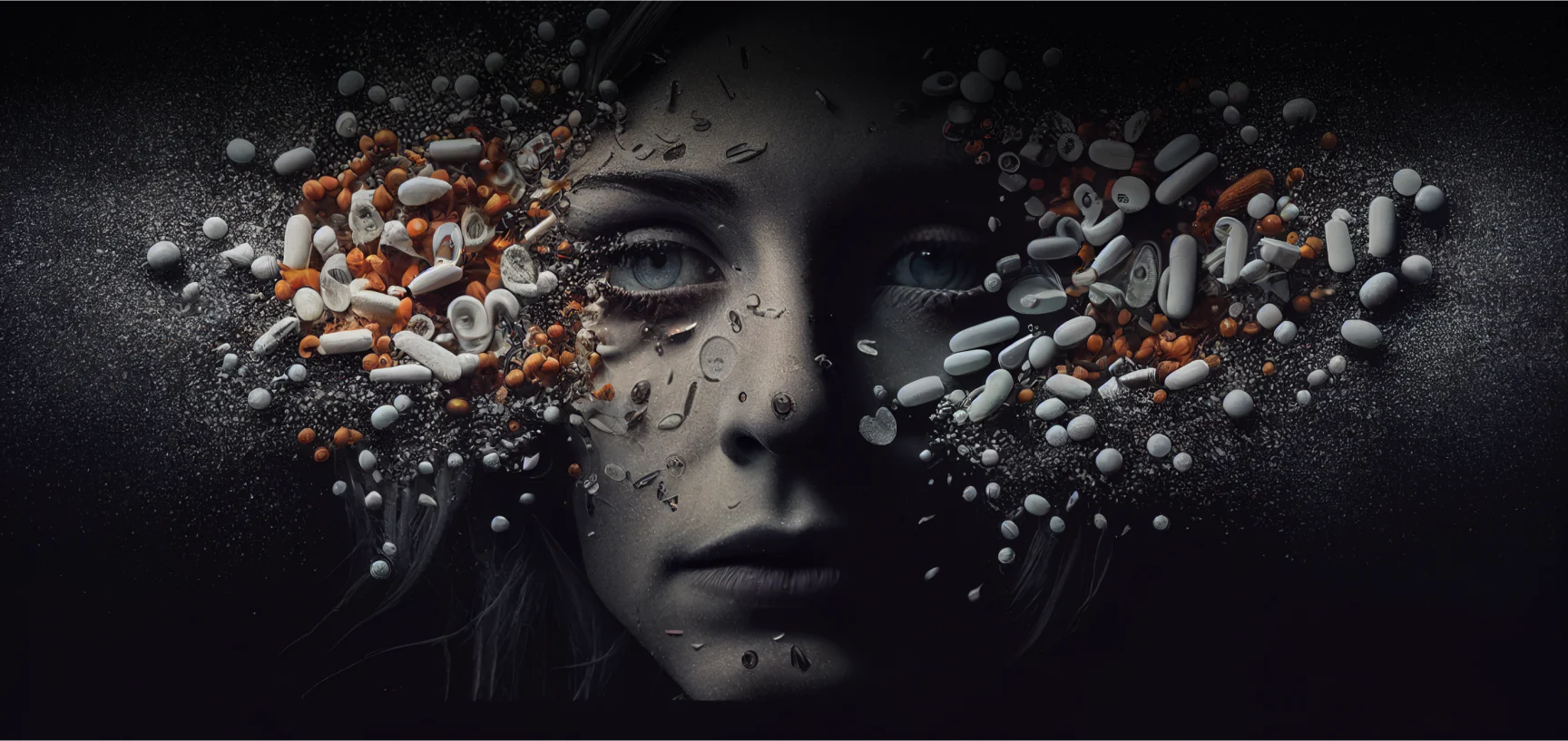
 Jamie Peck
Jamie Peck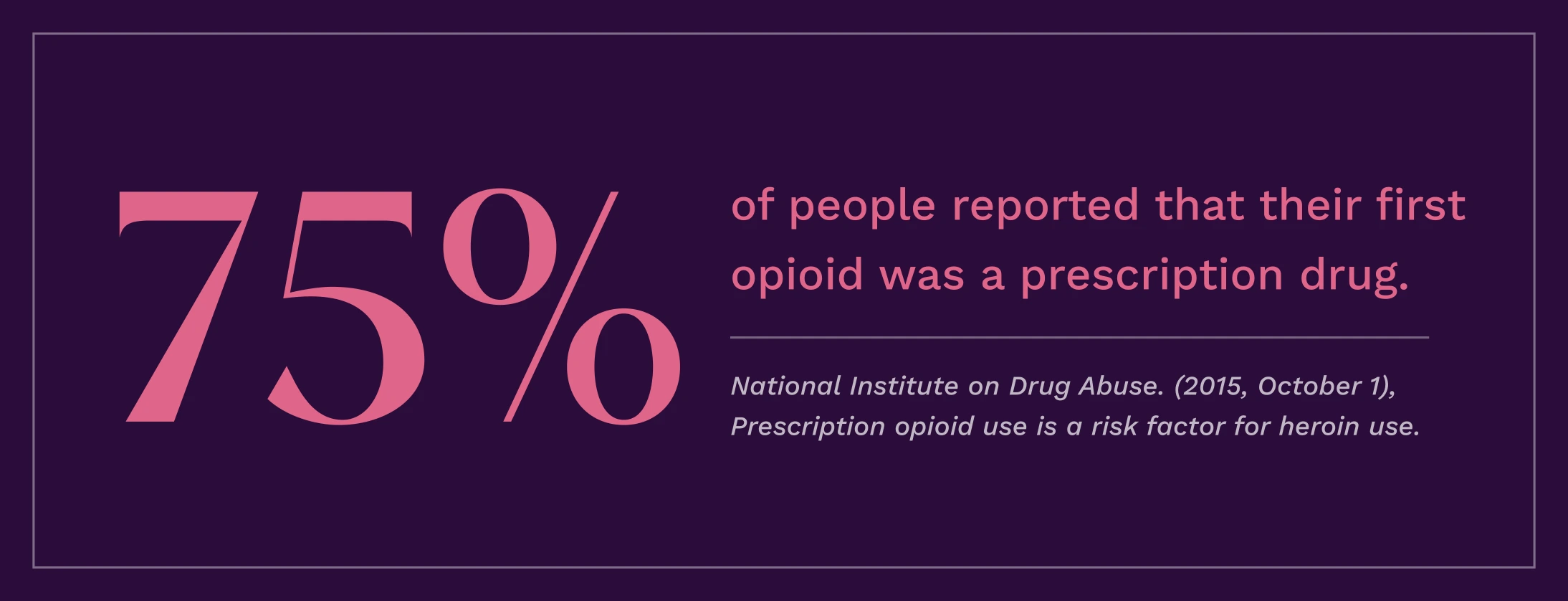
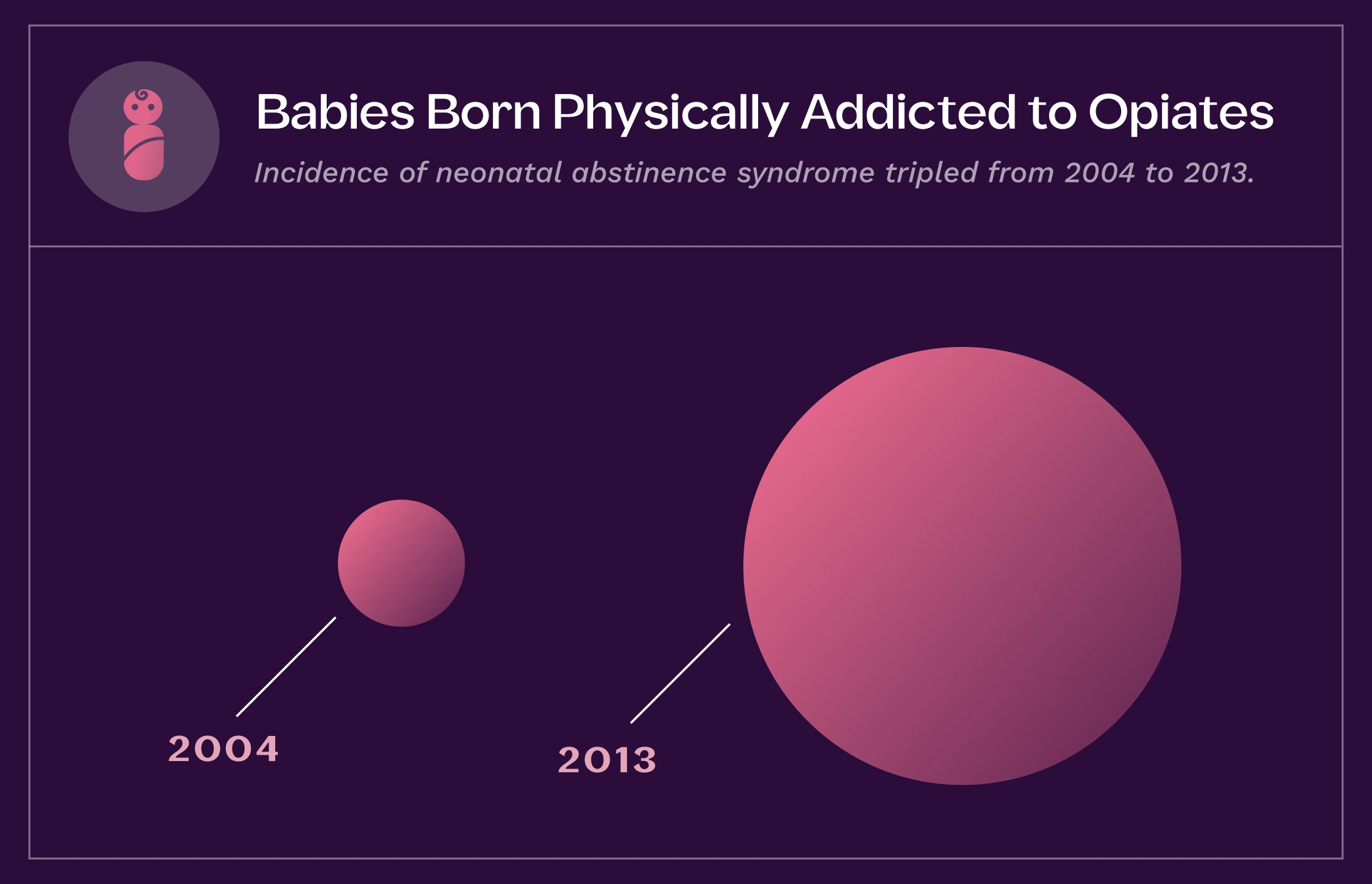
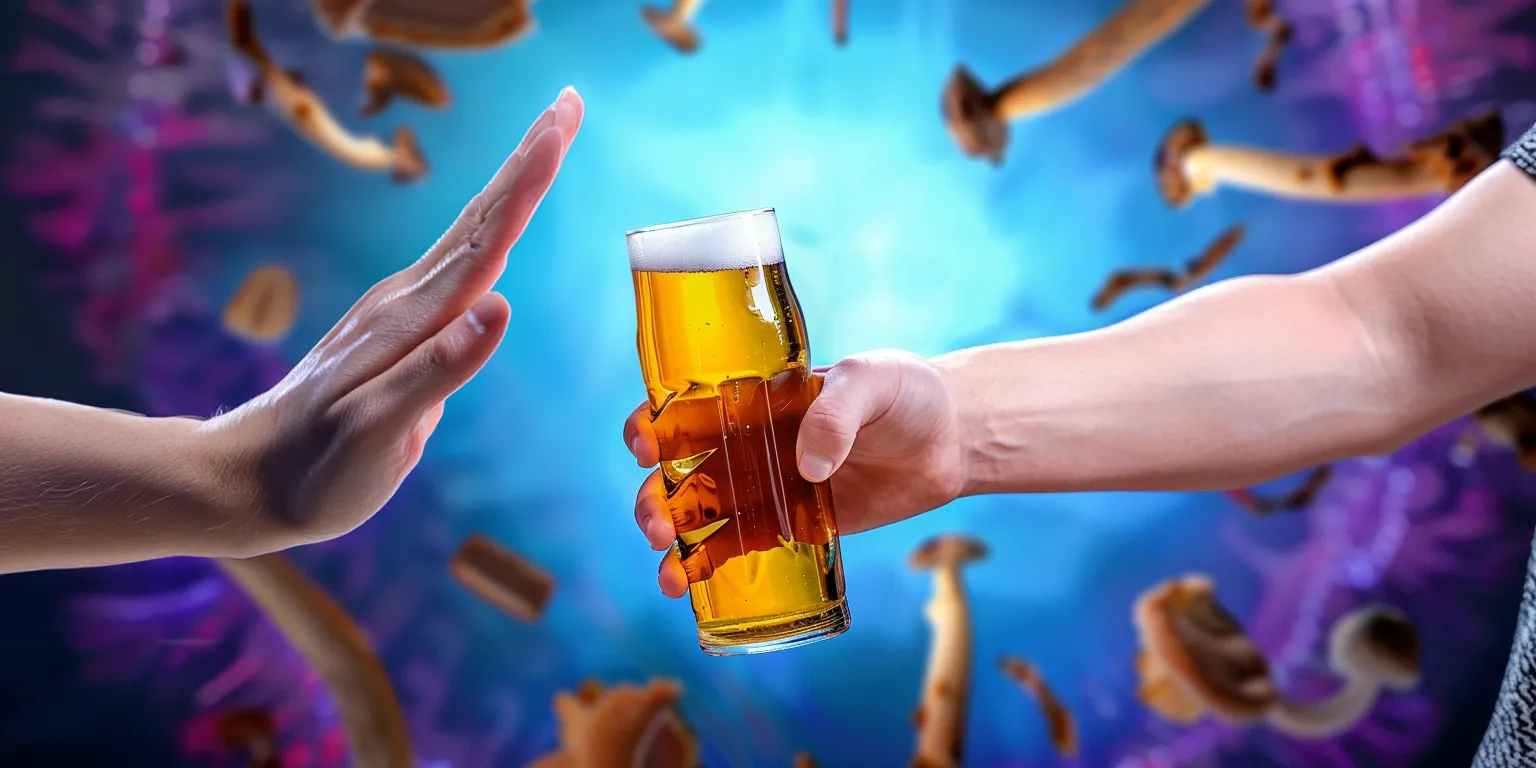
 David Connell
David Connell